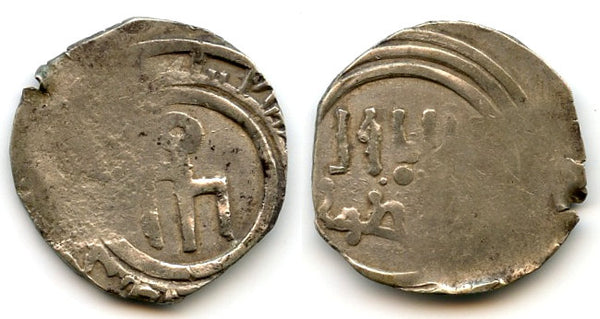
Three-pronged tamgha (asymmetric shoulders) of an uncertain relative of Ogedei, date written out around (unread) // Shahada in arabic, all within a double circle. 19mm, 2.14 grams. Album 3797 (former O1979) var; Zeno 364038 (this coin).
Without the dot next to tamgha and without the mint name above Shahada (the mint name is probably within the marginal inscription around tamgha, along with the frozen date 644). The only recorded coin of this type.
Struck in the later 1240s or 1250s (the only known date is 644 AH (1246), all coins of this type might have that date), after the death of Ogedei. He is known to have appointed some of his relatives to rule over the Imil area - the unique three-pronged tamgha on this coin probably belonged to these unknown members of the Ogedeid family. Very rare, poorly studied and not yet properly published. These are nearly always poorly struck, with large flat areas.
Ögedei Khan (c. 1186–1241) was the third son of Genghis Khan and his designated successor, ruling as Great Khan of the Mongol Empire from 1229 to 1241. Chosen by his father for his balanced temperament and administrative skill, Ögedei continued the empire’s rapid expansion, completing the conquest of the Jin dynasty in northern China, subjugating the Western Xia, and launching successful campaigns into Korea, the Middle East, and Eastern Europe. Under his leadership, Mongol armies reached as far as Hungary and Poland. Ögedei strengthened the empire’s administrative structure, established a permanent capital at Karakorum, and promoted trade and communication across Eurasia. Known for his generosity and pragmatism, he nevertheless indulged heavily in drinking, a habit that contributed to his death in 1241, which in turn halted the Mongol advance into Europe.
